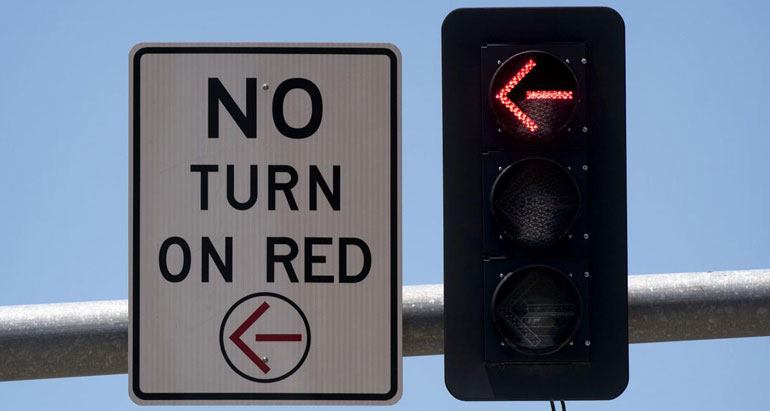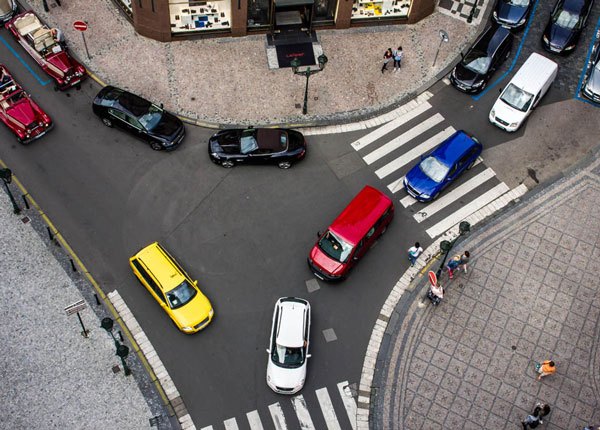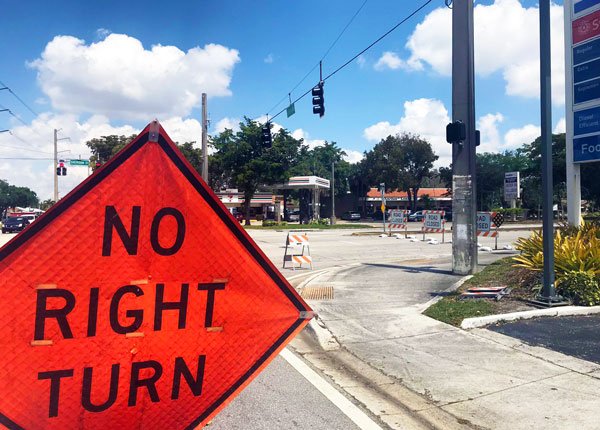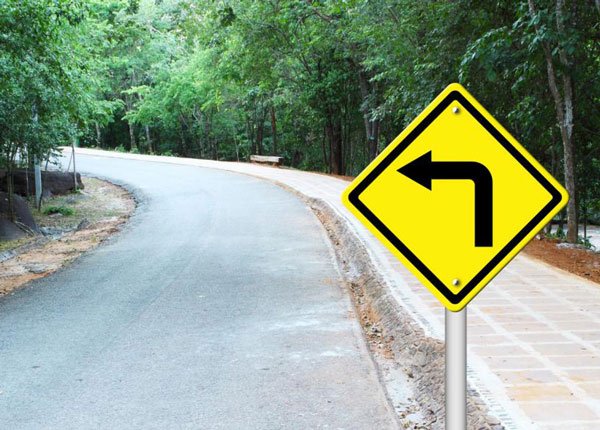
Protected Turns - The Right Way To Navigate Complex Intersections
Updated Oct. 30, 2020You may come across the terms “unprotected turn”, “fully-protected turn” and “semi-protected turn” in your state driving manual. Unfortunately, most states do not reserve enough space to completely explain these phrases in their handbooks. Here, you can find everything you need to learn about protected turns.
Protected turns are made at signal-controlled intersections when a green arrow light is present. When a turn is protected, all other streams of traffic, cyclists and pedestrians are halted by red traffic signals. This makes protected turns safer and easier to negotiate than unprotected turns, as the chances of colliding with another road user are minimized.
You will often encounter the green directional arrows which permit protected turns at busy intersections, where the risk of a collision would otherwise be high. They are particularly prevalent at intersections with dedicated turn lanes or “protected turn lanes.”
How to make a protected left turn
- 1

Pick a lane.
To make a protected left turn at an intersection that allows left turns, you must first ensure you are occupying the lane reserved exclusively for left turns. Prepare for this in advance of the turn, as getting stuck in a lane that allows you to turn left or travel straight may leave you unable to turn left when the green arrow signal is active. In the left turn lane, you will not get stuck behind a driver waiting to pass straight through the intersection. As always, make sure you signal your intention to turn left using your indicators or hand signals. - 2

Wait for the green signal.
Do not turn left until the green arrow traffic signal is active. - 3

Allow traffic to clear.
Wait until all conflicting traffic has cleared the intersection. Some drivers and pedestrians may still be passing through if the green arrow signal has only just come on. You must always yield to these road users before completing your left turn. - 4

Enter the intersection.
Having adhered to the above rules, you may enter the intersection to execute your left turn.
Do not rush when the signal changes
If you have not yet entered the intersection when the green arrow turns yellow, you should bring your vehicle to a stop and wait for the next green signal. Do not rush to enter the intersection when the signal light is yellow, as you may end up competing with conflicting traffic and being involved in a collision. Do not panic if the arrow turns from green to yellow while you are already passing through the intersection; simply complete your turn in a safe and timely manner.
Turning without an active green arrow
Newer drivers often make the mistake of not turning left at an intersection with a green arrow signal, if the signal is not active. Keep in mind that you can still make a left turn in this situation under a steady green light or flashing yellow arrow, though the conditions you must adhere to are different as this would be an unprotected turn. Make sure you yield to opposing traffic and pedestrians before turning under a steady green light or yellow flashing arrow.
 Flashing yellow turn lights remind drivers that they are able to make a turn even if the green turn arrow is inactive, after yielding to opposing traffic.
Flashing yellow turn lights remind drivers that they are able to make a turn even if the green turn arrow is inactive, after yielding to opposing traffic. To prevent drivers from making a left turn under a steady green light, a separate red arrow is utilized. A red arrow pointing in the direction of the turn prohibits movement in that direction.
 An additional "no turn on red arrow" sign may be placed nex to the traffic light to help drivers navigate complex driving situations.
An additional "no turn on red arrow" sign may be placed nex to the traffic light to help drivers navigate complex driving situations.How to make a protected right turn
There is not much more we need to add here, as a protected right turn is made in much the same way as a protected left turn. Follow the steps outlined above to make a protected right turn. This is the safest turn you can make at an intersection as unlike left turns, you will never have to worry about colliding with opposing traffic.
As with left turns, you should endeavor to take a position in the lane marked “RIGHT TURN ONLY” when making a protected right turn. If the green arrow is not active but a steady green signal is, do not wait at the intersection. Turning right in this situation is still permissible so waiting for a green arrow will achieve nothing, except aggravating the row drivers behind you.
Most states will allow right turns on a red signal light, as drivers do not have to contend with opposing traffic. This is not the case nation-wide, so check your driving manual for location-specific guidelines. Do not make a right turn at an intersection if a red right-pointing arrow is present.




